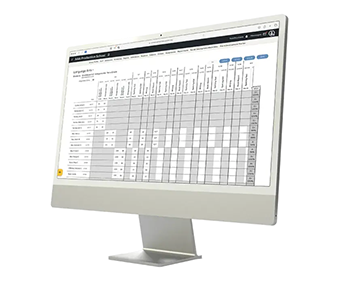discover
Director of Technology for Education, North American Division

n this edition of Discover, you’ll find practical technology tools and tips you can put to work right away.
- Compare devices and organize your digital workflows
- Explore AI guidelines and classroom resources
- Discover strategies to make daily teaching more efficient and effective
Unpack technology that equips you to be the legendary teacher God made you to be. Hosts Desmond Suarez and Aaron Long inspire and equip educators to create learning experiences that both teach and transform the lives of their students through new technology and resources.
Think of it as a toolkit for Adventist educators—helping you save time, stay organized, and support student learning with confidence.
EDTech Updates, Resources, & PD for NAD Teachers & Administrators
I
Discounted EDTech Resources

As you gear up for the year, be sure to review the many discounted resources linked on the AEtech webpage. Then, hop on over to B&H and sign up for their B2B (Omnia) program here! And for those interested in OETC, check out their offerings here and then locate your AEtech rep here to get started.
Lightspeed Systems

Lightspeed Systems provides cybersecurity tools to keep your students cybersafe! Learn about the products and the special NAD pricing.
ISTE 2025 Recap

We were honored to attend ISTELive 2025 with the primary purpose of scouting the best EdTech resources for Adventist schools, teachers and administrators! We interviewed 25 companies including Canva, Jamf, Lego, Google & others, and shared them all, just for you... in Episode 19 and 20!
Generative AI Guidelines

We are excited to share the NAD-approved Generative AI Guidelines for review at the local school level, to be considered for inclusion in school handbooks with appropriate revisions as desired at the school level. Don't forget to visit the AI page on the AEtech site.
Organize Like a Pro!

We want to help you start this year on the right note... planning to leave more school work at school by organizing like a champ! That's why we created Episode 17 – to help you better prepare for success and more time with friends and family!
Ipads or Chromebooks?!

We had a blast arguing this question so you can learn along with us! This episode, along with many others, is timestamped so you can jump straight to the parts that interest you most!
Meet your AEtech Rep!

What exactly is AEtech? In this short, we cover exactly that. So tune in and reach out! We're here to support!
New School Year EDTech Backpack

The tech that you need for back-to-school.
Recommend a Guest!

Recommend a Guest! We know that we have some all star teachers out there doing some great work with classroom technology! If you know of a teacher you think deserves to be featured on an upcoming episode, please let us know!
FALL 2025


Desmond Suarez II
Richmond Academy, Teacher
I work at Richmond Academy where I have been teaching since 2012. I teach religion, social studies, computers, and photography / videography. I am the AEtech representative for Columbia Union.
I am a proud graduate of Southern Adventist University with a bachelors in Religious Education and a minor in Computers. I also have a masters in Instructional Systems and Learning Technology from the great Florida State University.
I really love helping people learn so that they can fulfill their greatest potential and finding the best tools to accomplish this.
Aaron Long
Burton Adventist Academy, Director for Advancement
I work at Burton Adventist Academy where I have been teaching for over a decade, and now work as the Director of Advancement. I am the AEtech representation for Southwestern Union.
I am a proud graduate of Southwestern Adventist University with a bachelors in Religious Education and a minor in Psychology. I received my masters in Instructional Design and Technology from Walden University in 2017 and I have a passion for leading and inspiring educators, especially in the area of the thoughtful integration of classroom technology.
Meet the Hosts

Don’t forget to subscribe to the channel so you never miss new episodes!
